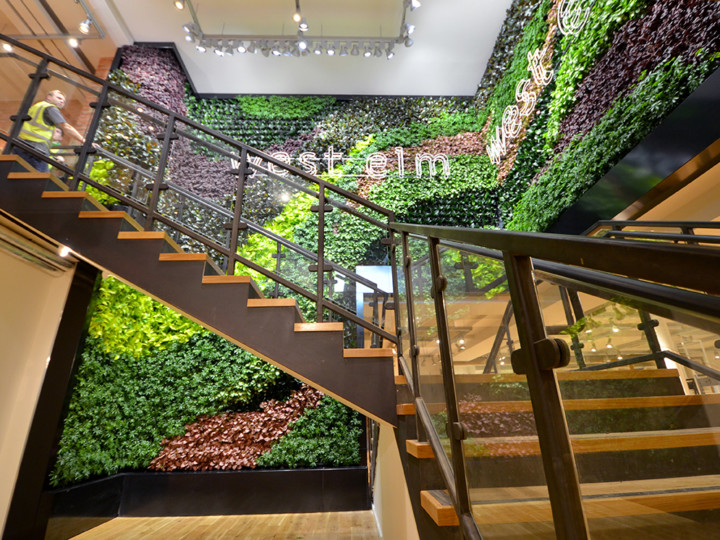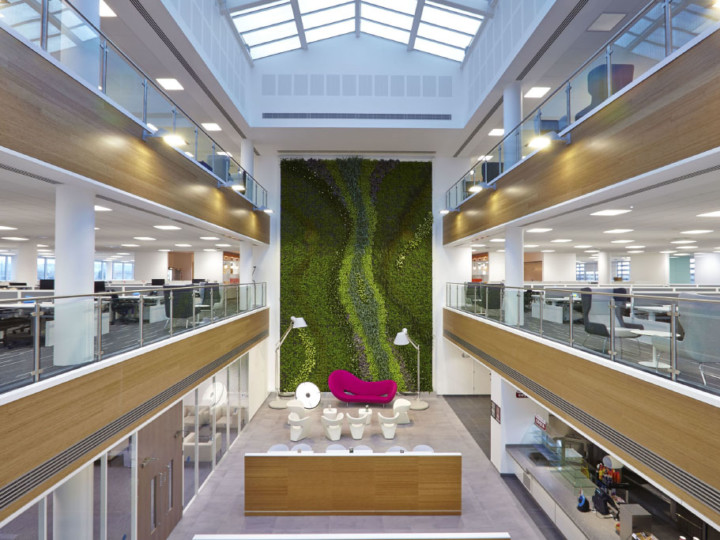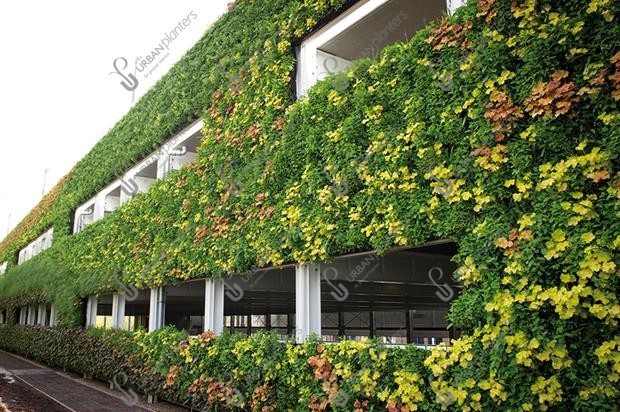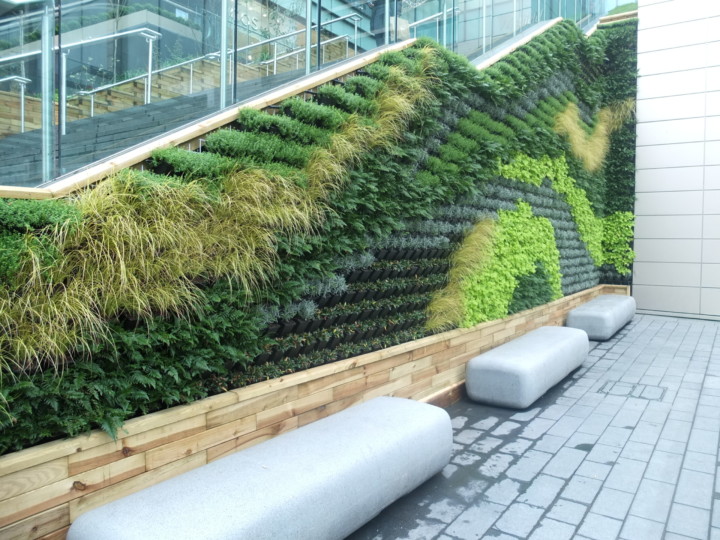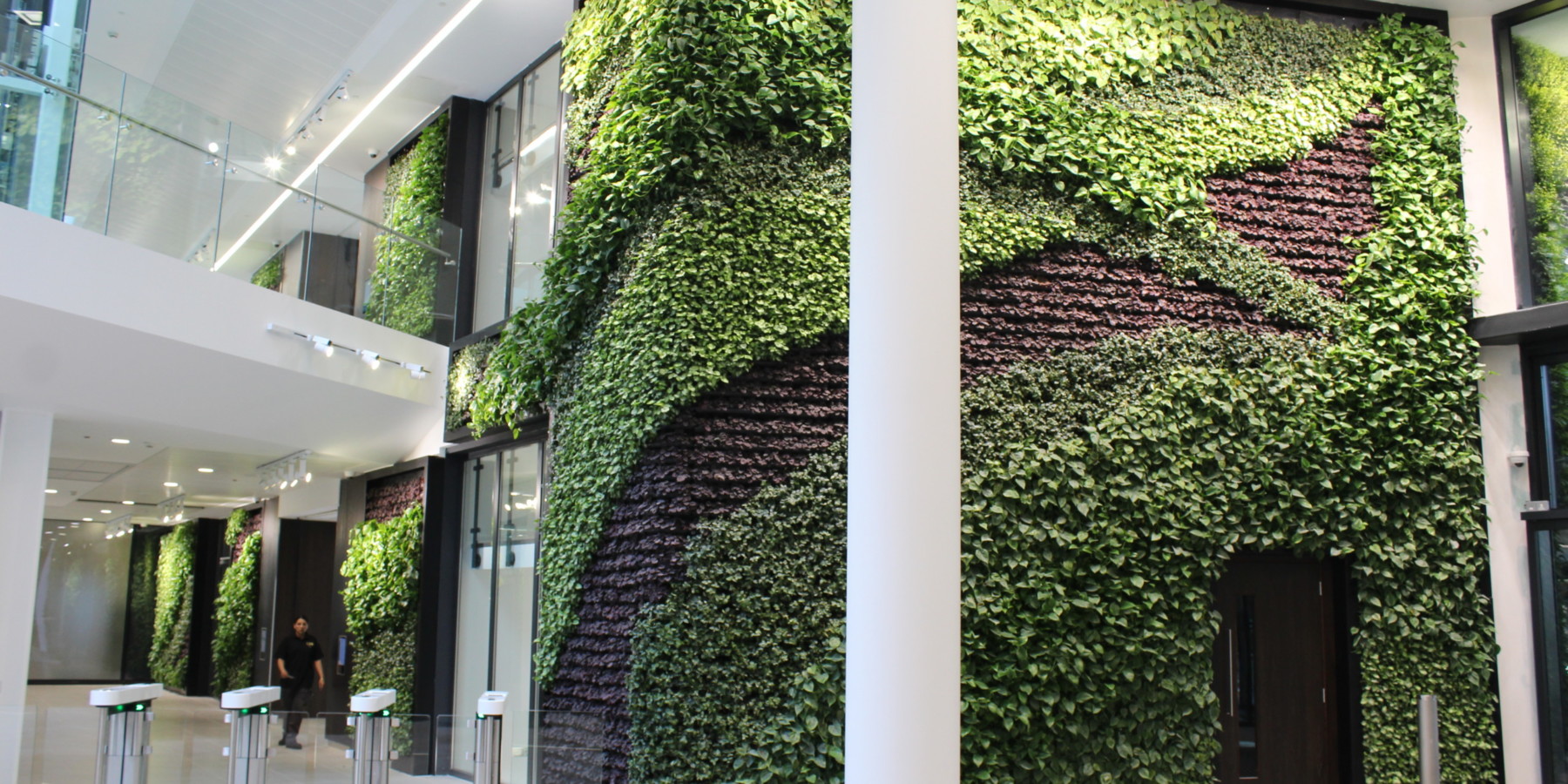
Beyond aesthetics: How having a plant indoors can positively benefit your health.
-
24 April 2025
We’ve moved far beyond the days of rudimentary workplaces, so why should our offices remain relics of the past – sterile boxes with little to offer beyond the functional? Imagine transforming your space into a powerful environment where vibrant green walls not only captivate the eye but actively contribute to well-being. Research indicates that indoor plants can significantly impact how we feel, with studies revealing a reduction in fatigue by up to 20%. Living walls, also known as green walls and vertical gardens doesn’t just mean happier employees and a lush office; reduced fatigue translates to increased focus, improved productivity, and ultimately, a more engaged and effective workforce for any business.
Green walls offer more than just visual appeal; they boost productivity and have numerous health benefits. Urban Planters provide a range of options to ensure your health is benefited.
1. Improved Air Quality
The air within our buildings can often be more polluted than the air outside, trapping a mixture of invisible nasties. Green walls act as natural filters in this environment. The leaves and roots of the plants in a green wall system actively capture airborne pollutants, including common VOCs (volatile organic compounds) like formaldehyde, benzene, and trichloroethylene, which are released from everyday materials such as furniture, carpets, and cleaning products. Through their stomata (tiny pores on their leaves), plants absorb these harmful gases. Simultaneously, during photosynthesis, they release fresh oxygen, effectively replenishing the air and creating a healthier, more breathable atmosphere. This natural filtration process can lead to reduced instances of headaches, fatigue, and respiratory issues, contributing to improved overall well-being within the space.
To explore how Urban Planters can integrate these systems into your space, please visit our website.
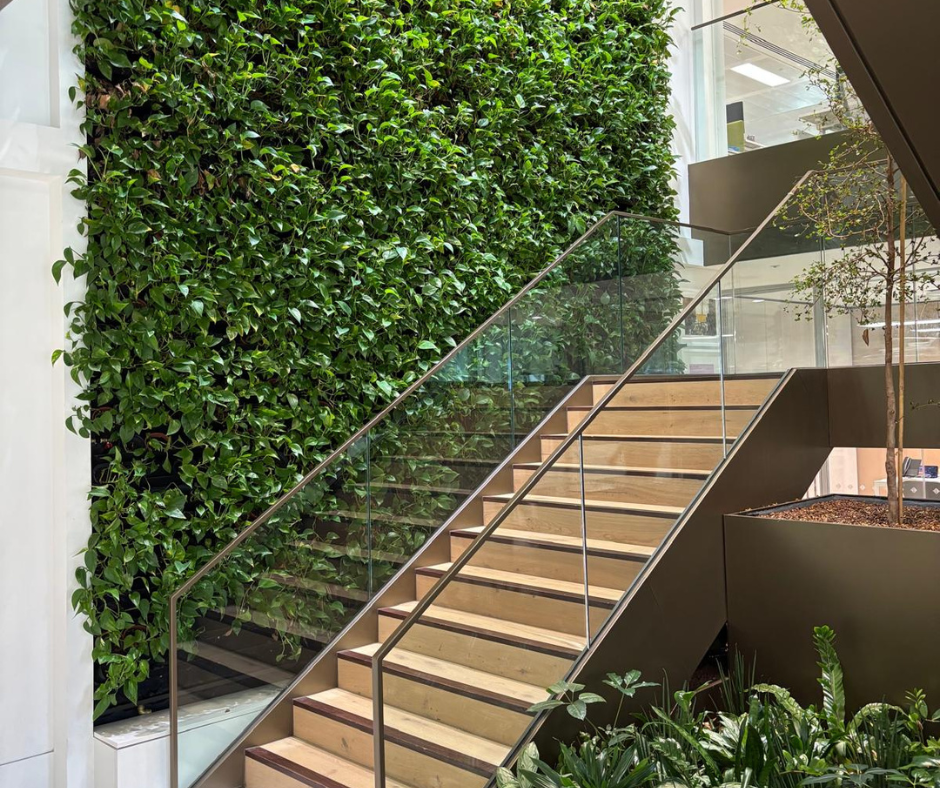
2. Stress Reduction
Feeling overwhelmed? Even a glimpse of green can make a difference. Living walls offer a fantastic way to bring nature’s calming influence indoors, which is especially valuable in our busy lives. Did you know that simply looking at plants has been shown to lower your heart rate and reduce feelings of anxiety? It’s like a mini mental escape without even leaving the room and it’s not just living walls that offer this benefit; even high-quality artificial green walls, like the ones Urban Planters uses, can provide that visual connection to nature, offering a sense of peace in spaces where real plants might not thrive. In a world where stress can feel like a constant companion, these green oases can be a vital element in making a more stress free and healthy environment.

3. Improved concentrations and memory retention
Numerous studies have demonstrated the positive effects of green spaces on cognitive performance and creativity. Bringing nature indoors through living walls can enhance productivity and stimulate creative thinking. The presence of plants in work environments has been linked to improved concentration, memory retention, and problem-solving skills. Incorporating green walls into office spaces or study areas can provide a natural boost to productivity and promote a more dynamic and innovative atmosphere.
4. Reduced risk of hearing damage
Green walls, whether living or replica, present a valuable and often unexpected benefit: they function as natural sound barriers. The dense foliage of plants effectively absorbs and redirect sound waves, contributing to a reduction in noise pollution within busy environments. This acoustic advantage is particularly relevant in urban settings or open-plan offices, where excessive noise can lead to distraction, stress, and decreased productivity. By offering a visually appealing and eco-friendly solution, green walls help to create quieter, more peaceful spaces that promote auditory well-being.
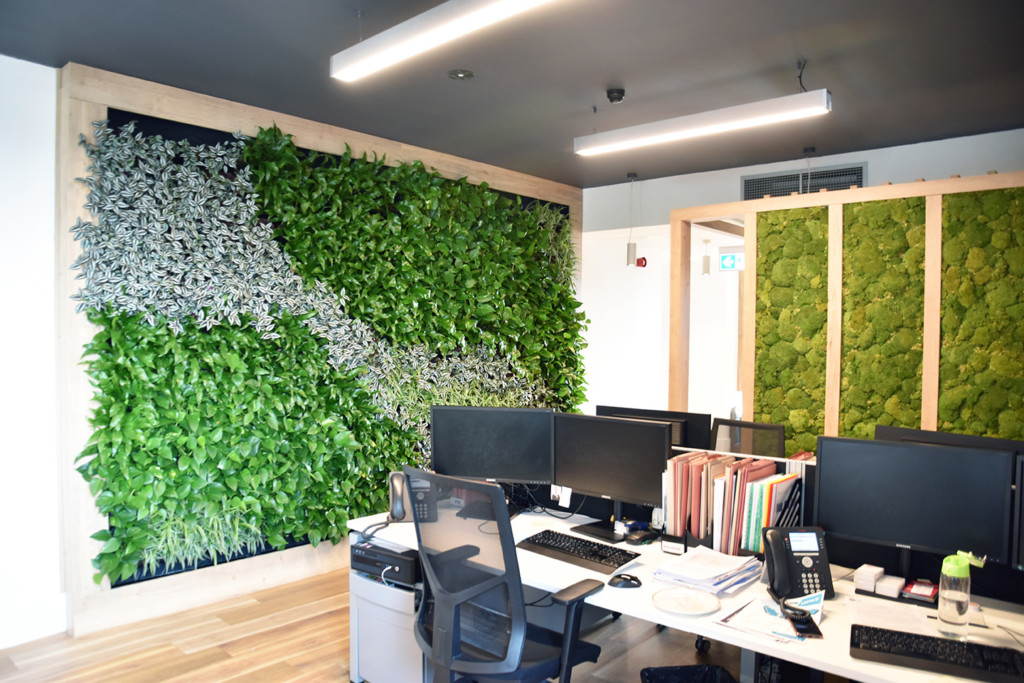
5. Blood pressure reduction
The presence of indoor plants, such as those in green walls, has been shown to benefit workers’ health, specifically by contributing to a reduction in diastolic blood pressure. Diastolic blood pressure is the measurement of blood pressure between heartbeats, and lower levels indicate a more relaxed state of the cardiovascular system. By creating a calmer and healthier work environment, plants have shown an average reduction of 2.5 units which is considered clinically meaningful.
6. Increased Pain Tolerance
While the precise mechanisms are still being explored, research suggests that indoor plants can contribute to an increase in pain tolerance. This effect is potentially linked to the stress-reducing properties of plants. The presence of greenery in indoor environments has been shown to lower stress levels, which may in turn influence an individual’s perception and experience of pain. When stress is reduced, the body’s sensitivity to pain signals might decrease, leading to a greater tolerance of discomfort. This highlights another fascinating way in which incorporating nature into our interiors can positively impact our overall well-being
7. Reduction in physical discomfort
Studies indicate that engaging with indoor plants can be effective in reducing both psychological and physiological stress. This is reflected in the decrease in autonomic nervous system activity and diastolic blood pressure, and the corresponding increase in feelings of comfort, relaxation, and a stronger connection to nature. In simpler terms, this means that interacting with plants can help to calm your body’s stress response and lower your blood pressure, making you feel more at ease. For example, research has demonstrated that individuals report feeling more comfortable and relaxed when performing plant-related activities, compared to computer-based tasks.
8. Physiological Benefits
Indoor plants have several positive physiological effects on people, primarily through the reduction of stress. Interacting with indoor plants can lower both autonomic nervous system activity and diastolic blood pressure, which are key indicators of the body’s stress response. In simpler terms, this means that plants help to calm the body’s reaction to stress, leading to a more relaxed state.
9. Positive emotions
As we know now, plants have a positive influence on our psychological well-being. This is primarily seen through an increase in positive emotions and a reduction in negative feelings. For example, interacting with plants can make individuals feel more comfortable, soothed, and natural. In addition to the psychological benefits, plants also have a positive effect on one’s mood.

10. Improved Mental Well-being
Previously discussed plants help to reduce stress, which prevents the body from being in a constant state of stress. By alleviating stress, plants contribute to a more positive mood and an improved overall mental state.
Green walls offer a compelling solution to the challenges of urban living by bringing the beauty and benefits of nature into our daily lives.
From improving air quality and reducing stress to boosting productivity and fostering healing, these living installations have a profound impact on our health and wellbeing. By embracing the concept of living walls, we can create healthier, more sustainable spaces that promote our connection with nature and enhance our overall quality of life. Embrace the green revolution and transform your environments into living, breathing sanctuaries of well-being.
